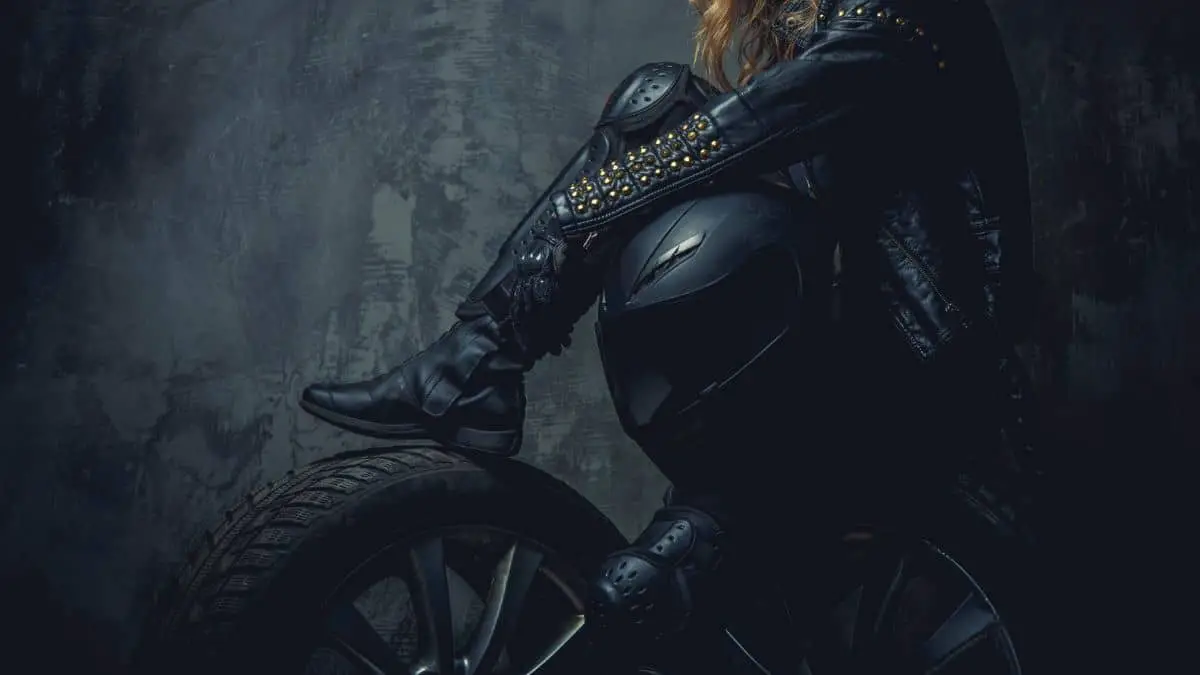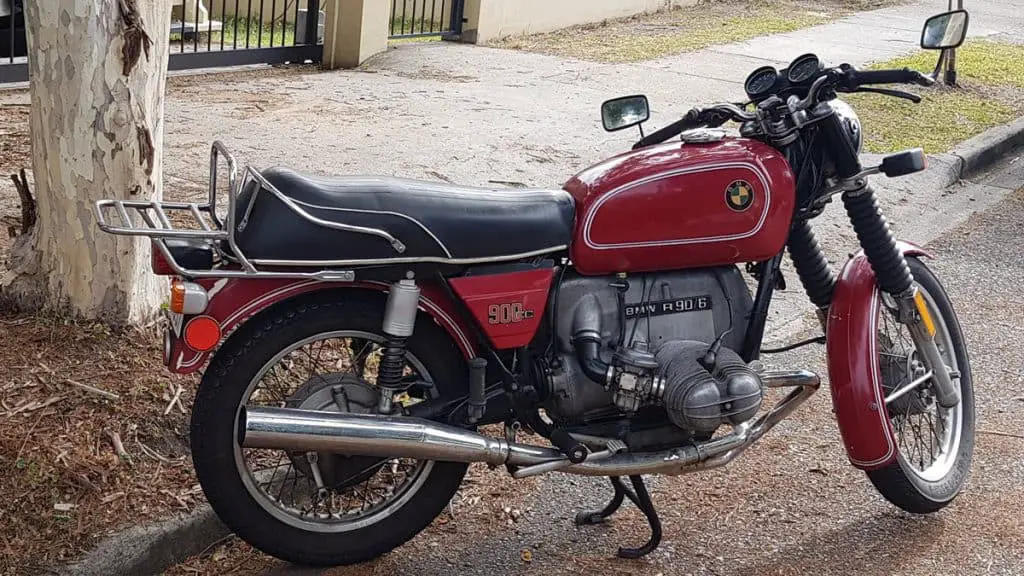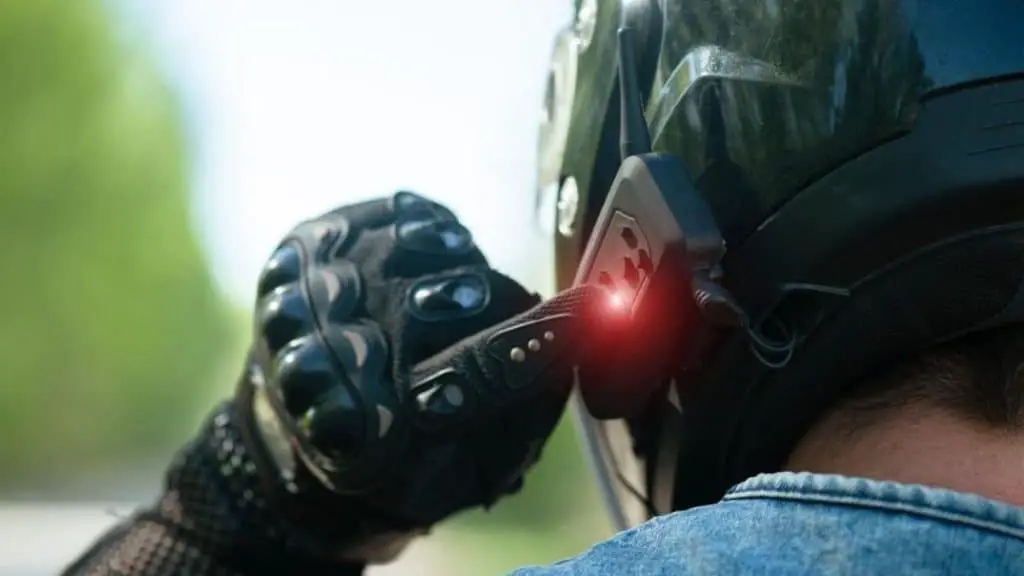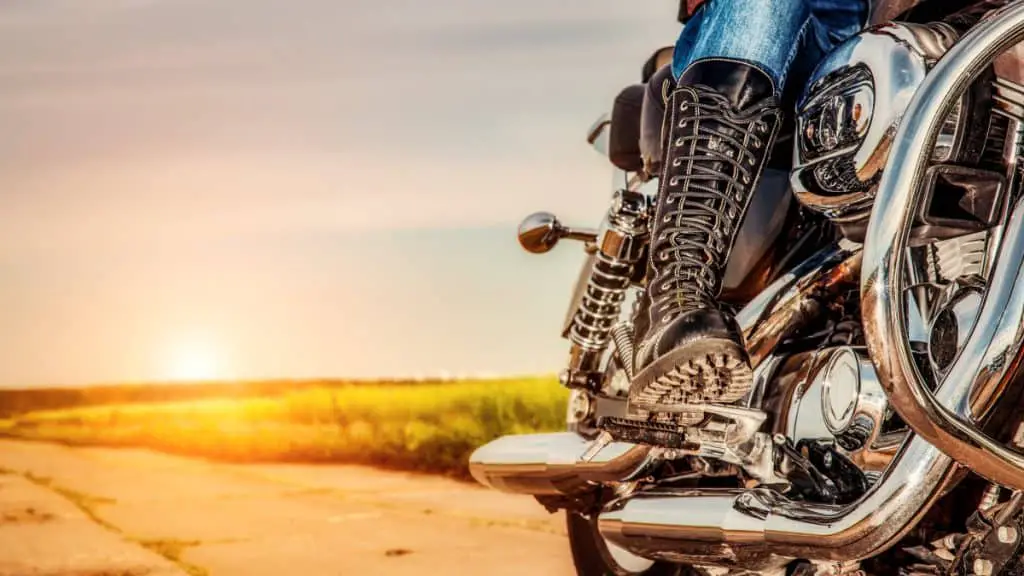How to Wear Motorcycle Knee Guards, Braces or Pads Correctly — A Biker’s Guide
Let’s admit it: none of us have kneecaps or shinbones layered with some super-protective stuff like adamantium.
That makes using knee guards or knee braces while riding a dual sports adventure bike or a dirt bike a must. Actually, it’s not just about choosing the right knee protection, but also about wearing it the right way.
Because if you don’t put your armor right, you might as well ditch it.
If your question is whether to wear motorcycle knee pads over or under jeans, you’re in the right place. We will discuss all about motorcycle knee guards and how to wear them in this article.
But first, let’s get one thing out of the way.
Do You Even Need Knee Pads or Guards While Riding a Motorcycle?
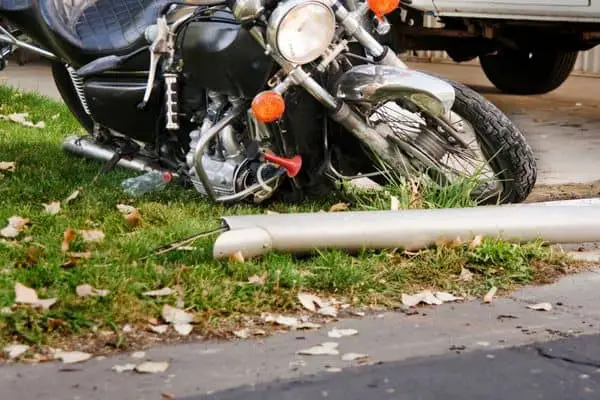
If you go through a report on the lower-extremity injuries caused by motorcycle accidents by the NHTSA, you will find that they are more common than upper-body injuries. And one of the most common areas that get injured is the knees.
Let’s keep in mind that the knees are one of the most vital weight-bearing joints in the body; and to be honest, it’s a tough job. Quite simply, severe knee injuries can lead to debilitating effects in the long run.
One important point is, a chunk of these accidents results in a bone fracture. Due to the anatomical features of the leg, the shin bone or the tibia is the one that gets fractured frequently.
What does that mean?
Quite simply, using a knee pad isn’t enough. You need to use a combined knee and shin guard to ensure the right level of protection for your legs.
Moreover, a bone fracture isn’t the only concern. A nasty twist or hyperextension during a crash can tear the vital muscles and ligaments that are an integral part of the knee. While not life-threatening, such injuries are messy.
And repairing a torn ligament like the ACL (anterior cruciate ligament) is an expensive affair. Not to forget, there can be additional expenses related to rehabilitation and therapy.
(K)ne(e)glecting & Its Consequences
Do you know what I find most mysterious?
The fact that so many riders set off after wearing helmets, gloves, and riding boots. While they use these obligatory protections, they simply ignore the importance of using knee protection gear.
And knee protectors are not just for Motocross riders. Imagine riding a heavy motorcycle at speeds as low as 15 miles per hour. Even at that speed, a crash can injure or at least bruise your knees.
If that isn’t enough, the NHTSA data indicates that in 2020, 82,528 motorcyclists were injured in an accident. Goes without saying, the percentage of knee injuries in that figure is pretty high.
So, if you have been ignoring knee protection while riding till now, remember, your luck might run out anytime.
In case you have already suffered a knee injury, it’s even more important to protect that part to prevent further damage. That makes knee guards or braces the right choice for scarred veterans.
While many riding pants are padded at the knees and made from abrasion-resistant materials packed in protector pockets, they might not be enough to safeguard the knees and the shin at high speeds. However, some riders do prefer using protective riding pants or reinforced riding jeans as they are easy to use.
(And so much faster to put on.)
A well-designed knee and shin guard or a knee brace will provide cushioning and keep the knees protected and stabilized during an accident. Today, there are knee guards made from high-impact resistant materials that are lightweight and more comfortable. They are also designed to prevent scratches on the shiny surface of the tank.
If you aren’t taking advantage of this technology, you’re risking injury and the ability to ride comfortably.
And that’s just sad.
What’s the Proper Way to Wear Knee and Shin Guards?
The first step is to choose a knee guard of the right size that provides the right amount of coverage. Unless the size is right, the guard will not feel comfortable. It’s best to follow the measurement chart provided by the brand.
Keep in mind that knee pads are smaller in size than knee guards. These pads provide protection only to the knee area and come without straps.
While wearing, center the guard on your kneecap and make sure to fasten the straps properly. Or else the guard might slide around while riding. Ideally, the guard should cover the entire area 6-inches above and below the knees. A longer length will also provide better protection when you are negotiating steep downhill tracks.
Ideally, you should be able to slide one or two fingers between the guard and the leg. That will ensure that the guard is not too tight for comfort.
Now, knee protectors can be internal as well as external. Internal protectors can be worn under riding pants or jeans. While they don’t make you look like a modern-day stormtrooper, they can be uncomfortable. Besides, you will find them difficult to remove or adjust when needed.
External knee guards or pads match the profile of the human knee and come with hinges that ensure a full range of movement. These are worn outside the riding pants and are easy to put on and adjust.
However, you can wear them below the pants as well if that suits you better. But they might not fit under narrow-cut riding pants and restrict leg movement.
Knee Guards vs Knee Braces
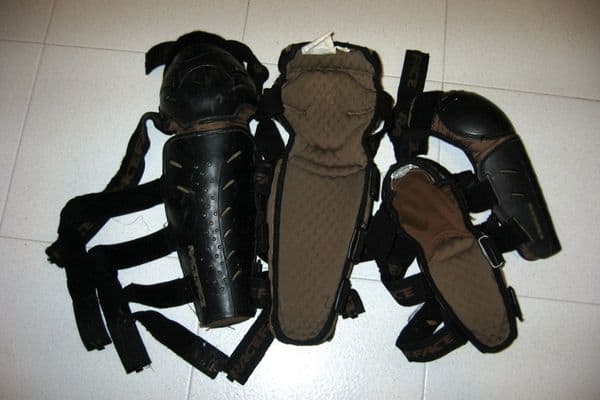
Knee guards offer a basic level of impact and abrasion protection and are a more affordable choice. However, they don’t limit the range of motion of the leg. That makes the knee vulnerable to twists and hyperextensions.
Knee braces have advanced features that provide additional support to the knee and prevent a wide range of knee injuries. They are more effective in preventing ligament ruptures.
That said, some brands have designed knee guards incorporating a few features from knee braces.
Many riders believe that knee braces are only used for recovering from an injury or post-operatively. But that’s not true. Generally, Motocross drivers prefer knee braces due to the high risk of crashes the sport involves.
High-end knee braces are made from lightweight materials like carbon fiber that offer excellent impact protection. In addition, they are also extremely comfortable.
Initially, riding with knee braces can feel odd. But once you get used to them, you will enjoy the extra confidence that they offer.
The only downside is the high price tag of these braces. But that’s the price you have to pay for the extra protection.
Frankly, I would prefer investing in a good quality knee brace than risk six months of bed rest and rehabilitation.
Frequently Asked Questions
When to wear a knee guard?
To ensure safety, it’s best that you use a knee guard whenever you ride. That said, you can choose the level of protection that you might need as per the riding conditions.
What are motorcycle knee pads made of?
Most knee pads and guards are made from high-quality plastic shells that can resist impacts. In addition, they have an inner foam lining that ensures comfort and shock absorption. They can also have metal inserts and abrasion-resistant fabric for additional protection.
Top-grade knee braces are made from carbon composites that are lightweight and can resist extreme impacts.
Do knee braces actually help?
Knee braces are functionally designed to provide additional support and stability to the knee joint. Apart from protecting the knee and shin from impacts, it also protects from injuries related to twists, hyperflexion, and hyperextensions.

